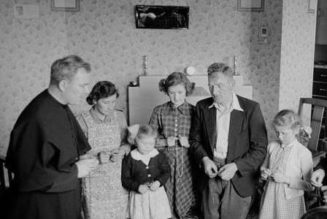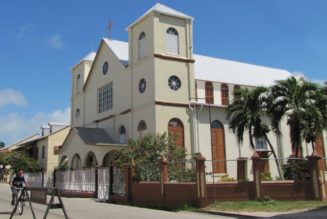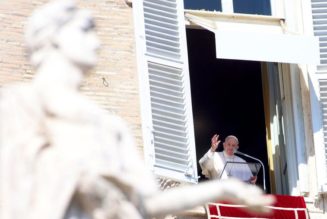By Phil Lawler ( bio – articles – email ) | Jun 23, 2022
Every day I pray for Pope Francis. And every day (I am exaggerating, but only slightly) the Pope issues another reminder that he does not approve of Catholics like me.
Those opening lines from a book I wrote five years ago, Lost Shepherd, came rushing back to mind last week, when I read the Pope’s latest published interview, with its condemnation of “restorationism.”
When Pope Francis decried the influence of “restorationist” groups, and added that “there are many in the United States”, he might as well have been rebuking me personally. The restoration of the Church has been my goal throughout my career. I helped to found the Center for the Restoration of Christian Culture at Thomas More College in New Hampshire. Nearly 40 years ago I was excited by the vision Paul Johnson sketched in his book, Pope John Paul II and the Catholic Restoration. The word “restoration” appears frequently in my writing on this site, invariably in a positive context, because I see restoration of the Church as the primary goal of Catholic lay action. Yet now the Sovereign Pontiff cites “restoration” as a disorder.
“Restoration has come on the scene to gag the Council,” the Pope told Civilta Cattolica. Well, that’s certainly not what I mean when I speak of restoration. And let’s be honest; it’s not really what the Pope means, either.
What to restore
What do I mean when I speak or write about restoration? I mean that I want my birthright as a Catholic. I want, for myself and my children, the rich heritage of the faith. Sadly—scandalously—that heritage has been taken from us. We have been robbed of a treasure, and I want it restored.
Our rightful heritage as Catholics begins with a beautiful and reverent liturgy. But there is much, much that should have been passed along to us intact: the clarity of teaching that guided the faithful through moral quandaries; the natural fellowship and solidarity among believers who shared the content of that teaching; the esprit de corps that naturally developed among Catholics who willingly embraced the Church’s demanding disciplines.
How much of that heritage has been denied us. Instead we suffer through the banalization of the liturgy, the uglification of our churches, the gradual disappearance of the religious orders. Catholic doctrine, as taught in Catholic schools, has been watered down to the point of inanity; grammar-school students trace smiley faces in their CCD classes. The Catholic voice in public life has been muted, confused, ultimately almost silenced—to the detriment of society. The very parish churches where our parents worshipped—where they were baptized and married and buried—are being closed. Our parents and grandparents, our predecessors in the faith, intended to hand down those churches to us, along with the other treasures of the faith. Of course we want them restored. We want what is rightfully our own.
Gagging or gaslighting?
But Pope Francis says that we restorationists want to “gag the Council” because we “never accepted the Council.” Here he fails to distinguish between the tiny minority of traditionalists (the “rad trads”) who always rejected Vatican II and the vast majority of orthodox Catholics who simply want to end the excesses and abuses that occurred in the years after the Council. Yes, it is true that in recent years many restorationists have grown more skeptical about the impact of the Council, and moved toward the traditionalist position. (I count myself in that category.) But that is because we have seen how, after Popes John Paul II and Benedict XVI tried to curb the post-conciliar excesses and abuses, Pope Francis has encouraged them. As Larry Chapp observed (even as he took pains to distance himself from “rad trads”):
The irony is that the very radical traditionalists the Pope clearly dislikes are of his own making. He is the one who has radicalized them.
Until the current pontificate, restorationists like myself were prepared to defend the teachings of the Council, indeed to cite the conciliar documents as evidence against radical changes and novelties. We took our cues from Pope Benedict, who reasoned that the Council should be recognized as an intrinsic part of that rich Catholic heritage—that when any questions arose, the teachings of the Council must be interpreted in the light of previous Church teachings, as in keeping with tradition. Remember the famous address of the former Pope to the Roman Curia in December 2005, in which he decried the “hermeneutic of discontinuity.”
The hermeneutic of discontinuity risks ending in a split between the pre-conciliar Church and the post-conciliar Church. It asserts that the texts of the Council as such do not yet express the true spirit of the Council. It claims that they are the result of compromises in which, to reach unanimity, it was found necessary to keep and reconfirm many old things that are now pointless. However, the true spirit of the Council is not to be found in these compromises but instead in the impulses toward the new that are contained in the texts.
Sadly, Pope Francis has embraced that “hermeneutic of discontinuity.” He praises the “impulses toward the new,” and ridicules the “old things that are now pointless.” Although he frequently invokes the “true spirit of the Council,” he rarely cites the texts of the Council documents.
In the Civilta Cattolica interview in which he inveighed against “restorationism,” the Pope was only mildly critical of the German bishops’ “Synodal Path.” While indicating that he was uncomfortable with the German calls for radical changes in Church teaching and discipline, he said that he did not want to respond now, because he said those proposals were “greatly influenced by external pressures,” and “I am waiting to discern until there is no pressure.” But he gave no hint as to when the pressure might ease, nor why. As usual he was willing to go the extra mile toward accommodation with radical new proposals, while showing no such tolerance for established tradition.
Also in that same interview, Pope Francis portrayed himself as a champion of Vatican II, saying that “the Council that some pastors remember best is the Council of Trent.” He followed up that astonishing claim by insisting: “And what I am saying is not an absurdity.”
But of course it is an absurdity to suggest that any Catholic priest (unless Rip Van Winkle has been ordained) is unacquainted with the teachings of Vatican II, which have been proclaimed through all the Catholic world for sixty years. There are, certainly, some priests who believe that the Council’s teachings require explanation, or clarification, or even correction. But if the teachings of an ecumenical council can never be refined and supplemented, there would have been no need for Vatican II—or for Vatican I, for that matter. Maybe some pastors prefer the dogmatic formulations of the Council of Trent (or of Chalcedon or Nicea), but to set one council in opposition to another is precisely to use that misleading “hermeneutic of discontinuity.”
Earlier this month the Pope warned against people who “call themselves guardians of traditions.” Yet his own most direct assault on “restoration” is the apostolic letter entitled Traditionis Custodes: guardians of tradition. He calls for tolerance of new ideas, but shows no tolerance himself for the old. He floats a preposterous idea, and claims that it is not absurd. Let’s face it; he’s gaslighting us.
Missing the Holy Spirit?
Gaslighting, as a matter of fact, has become a popular pastime among liberal Catholics. At a recent conference in Chicago (an invitation-only affair, held by the self-proclaimed advocates of an “open” Church), Villanova theologian Massimo Faggioli complained that traditionalist criticism of Pope Francis illustrates, of all things, the “collapse of a healthy sense of tradition.”
Faggioli went on to lament “a rise of converts who bring a different set of expectations to their understanding of church tradition, which gives greater emphasis to the fathers of the church, the catechism and papal teaching than to the conciliar tradition, including Vatican II.”
The ironies abound in that analysis. Converts, who are presumably new to the Catholic faith, are unlikely to seek “restoration” of a past they did not experience. And converts are a sign of success in evangelization, not a phenomenon to be deplored. But above all the irony lies in Faggioli’s complaint that these converts prefer the established teachings of the Church to the conciliar tradition. Not the Council’s published documents, mind you, but the “tradition” of liberal advocacy that emerged in the wake of the Council.
Faggioli defends this curious new “tradition” by asserting that the Council launched a “shift from cognitive and propositional to a personalist and dialogical understanding of Revelation.” Thus he downplays the unavoidable fact that the Church teaches through propositions—documents and statements—and instead lauds the “dialogical understanding” that allows for easier manipulation. Here is a crystal-clear example of the flaw that Pope Benedict detected in the hermeneutic of discontinuity: the belief that the real lessons of Vatican II are contained not in what the Council Fathers actually said but in far more malleable “impulses toward the new that are contained in the texts.”
For many years, conservative Catholics like myself insisted that we should adhere to the text of the Council documents, rather than to the amorphous “spirit of Vatican II,” which was often at variance with what the Council taught. Then, guided by Pope Benedict, we argued that the Council must be understood in the context of previous Church teachings: an argument that the Council Fathers themselves explained in Dei Verbum, with its explanation of the role of the Holy Spirit and the authority of tradition.
The most radical traditionalists went further, saying that we should read previous Church teachings to the exclusion of conciliar teaching. That argument suggested that the inerrancy of the magisterium somehow lapsed in the 1960s: that the Holy Spirit did not guide the work of that ecumenical council.
Now the “progressive” wing of the Catholic Church advances the mirror image of that argument, suggesting that the magisterium became inerrant in the 1960s: that the prior “propositional” teachings of the Church lacked the guidance of the Spirit, which came into force after the Council. Thus in their view we need not pay much attention to what the Church taught up to and including the Council, nor to the thinking of the prelates who wrote and approved the conciliar documents. The Council and its proclamations were merely a launching pad, from which the new “tradition” took off.
A decade ago we were debating over rival claims to be the rightful heirs of Vatican II. Now we are debating the far more fundamental question of whether there is any legacy worth having—in Vatican II or in prior traditional Church teaching. The campaign against “restorationism” betrays a shocking suggestion that there is nothing in the glorious tradition of the Church that we might want to restore.
Sound Off! CatholicCulture.org supporters weigh in.
All comments are moderated. To lighten our editing burden, only current donors are allowed to Sound Off. If you are a current donor, log in to see the comment form; otherwise please support our work, and Sound Off!

Join Our Telegram Group : Salvation & Prosperity









